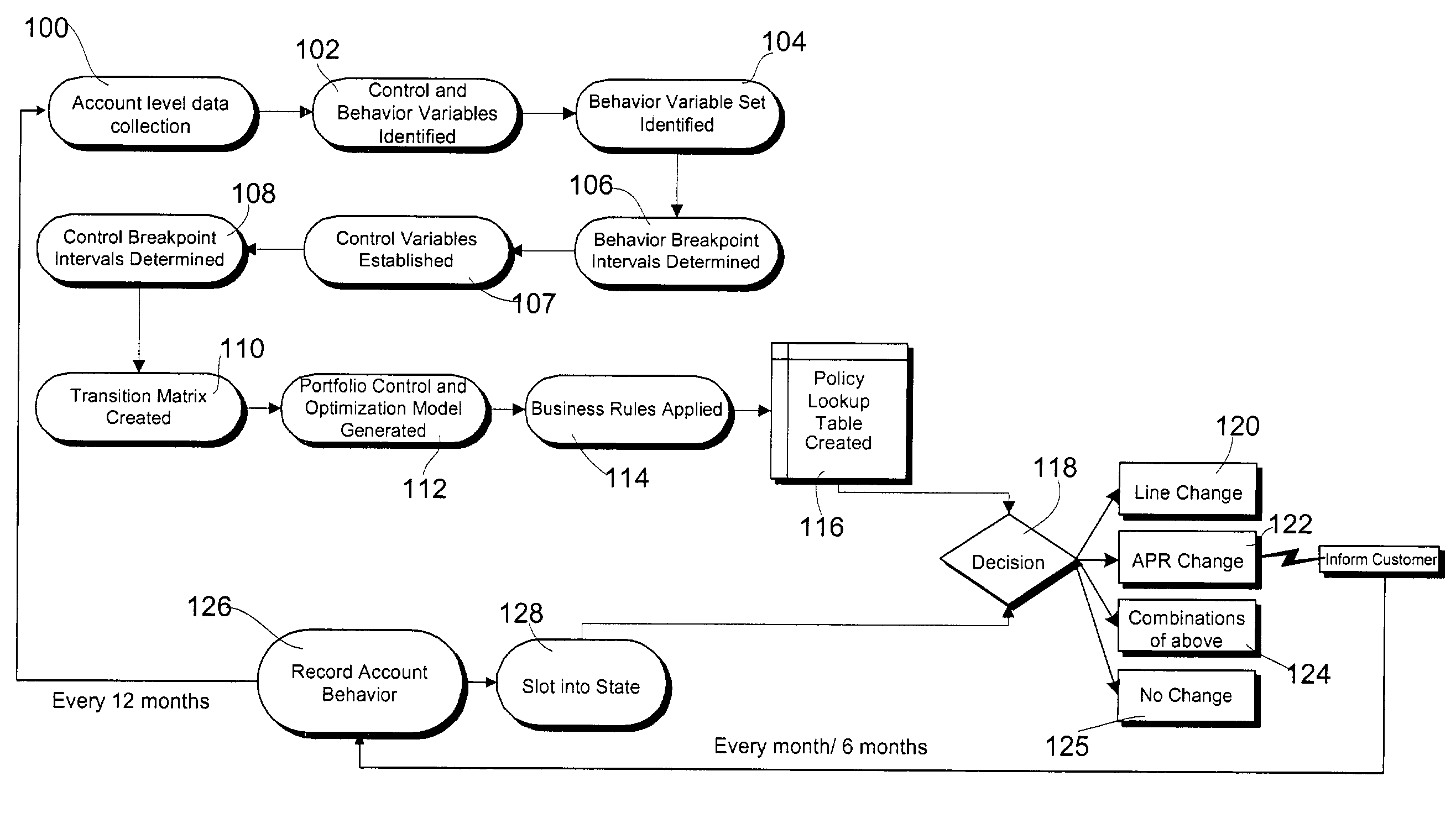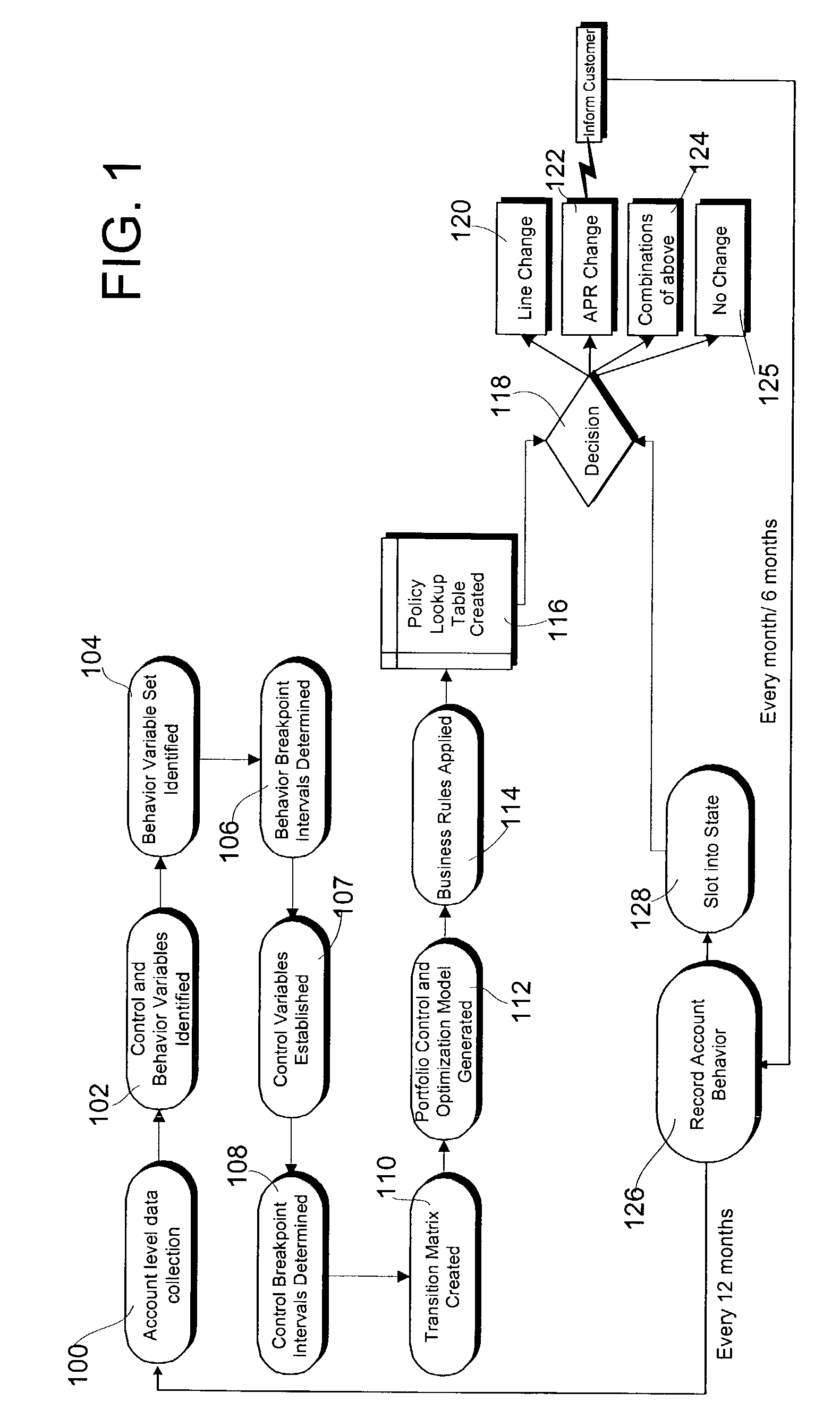Method and system for enhancing credit line management, price management and other discretionary levels setting for financial accounts
a credit line management and other discretionary level setting technology, applied in the field of methods, can solve the problems of reducing bank profitability, adversely affecting risk management, proving difficult to detect or measure, etc., and achieve the effect of maximizing the net present value (npv), improving the profit of a bankcard issuer, and accurate determination of price points
- Summary
- Abstract
- Description
- Claims
- Application Information
AI Technical Summary
Benefits of technology
Problems solved by technology
Method used
Image
Examples
Embodiment Construction
[0028]A Markov Decision Process (MDP) based approach enables future behavior modeling by way of a transition matrix, a very effective and accurate method for modeling behavior. Unfortunately, an impediment to the widespread commercial use of this methodology is the so-called curse of dimensionality (i.e., the problem size increases exponentially with the number of variables included). The present invention addresses and solves this problem, thereby enabling the effective use of a MDP-based approach. The model of the present invention is hereinafter referred to as the Portfolio Control and Optimization model.
[0029]Referring now to FIG. 1, there is shown a flow diagram illustrating one embodiment of a method for formulating and implementing the Portfolio Control and Optimization model of the present invention. Initially, in step 100, time-series data for each of a plurality of credit accounts is collected on a number of variables that may eventually be included within the MDP model. I...
PUM
 Login to View More
Login to View More Abstract
Description
Claims
Application Information
 Login to View More
Login to View More - R&D
- Intellectual Property
- Life Sciences
- Materials
- Tech Scout
- Unparalleled Data Quality
- Higher Quality Content
- 60% Fewer Hallucinations
Browse by: Latest US Patents, China's latest patents, Technical Efficacy Thesaurus, Application Domain, Technology Topic, Popular Technical Reports.
© 2025 PatSnap. All rights reserved.Legal|Privacy policy|Modern Slavery Act Transparency Statement|Sitemap|About US| Contact US: help@patsnap.com



